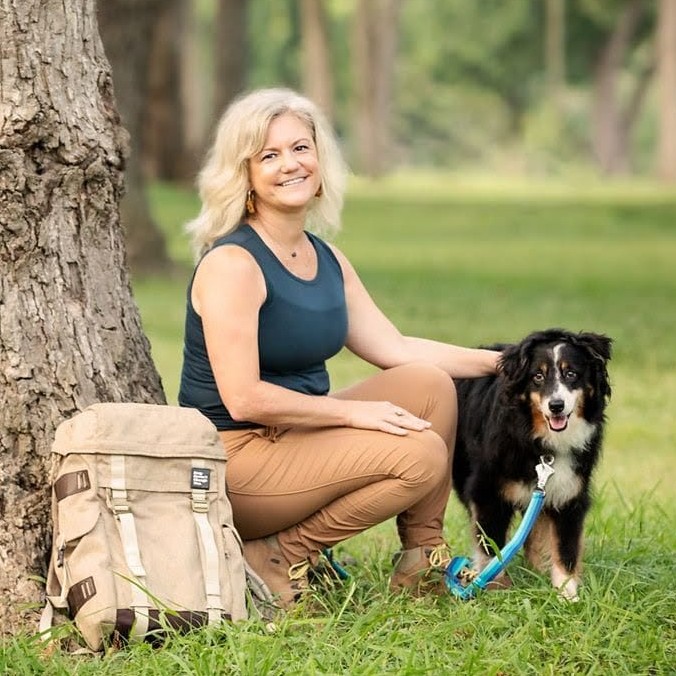Many of us think about a massage for ourselves as a treat, a way to occasionally reward ourselves. But we know it's also a proven way to be healthy -- and even more so for our dogs.
Like us, for most dogs, massage becomes a treat dogs love and happily anticipate at the first sign of massage time. The best part is, you'll know you're giving your dog real body and soul benefits with each massage session. Giving your dog a massage can become a regular activity you do together to share an unspoken way of communicating and connecting with each other.
As I've seen in my practice working with dog owners and their dogs, and with my own dogs, regular massage can help you avoid invasive and expensive procedures or surgery by keeping your dog strong and fluid to prevent issues -- as well as help alleviate problems or injuries when they occur.
Top 10 Benefits of dog massage for your pup
Your Dog's Plan
Stop! Don't read this long article. Instead, get everything you need to know, including all advice on Massage, in a customizable step-by-step plan for your dog created by our community of certified trainers and nutritionists.
#1: Improves circulation
We often call it therapeutic massage because that's what it is: therapy for your dog's full body, starting with the overarching benefit of increasing your dog's circulation.
How it works
As you massage your dog, you're increasing the flow of oxygen-rich blood cells to tissues and organs throughout your dog's entire body. The gentle pressure and deep tissue massage of the various strokes you'll learn in the following guides increase circulation so the massage helps to get more oxygen and nutrients throughout your dog's body to regenerate good, healthy cells.
#2: Stimulates removal of toxins
Massage helps remove toxins and other wastes by stimulating flow, breaking down any roadblocks, and energizing the efficient removal of toxins.
How it works
So many health problems are the result of the build-up of toxins in our dogs' bodies. Just think about the toxins from flea & tick and other meds or toxins on the ground on walks (lawn pesticides, air-borne toxins...). When you perform canine massage techniques, you're getting toxins moving and flowing out of the body in a natural way.
#3: Boosts immune system
When you give your dog a massage, you're boosting your pup's immune system by increasing lymphatic drainage. When dogs' bodies, and ours, are under stress of any kind (fighting infections or illness or dealing with emotional strain), the lymphatic system tends to slow down.
How it works
Keeping lymphatic draining moving smoothly is a main way to stay healthy, really the engine that keeps the immune system working. When you apply gentle pressure through massage, you get rid of any stuck points and open the lymphatic flow to balance and strengthen your dog's immune system.
Massage
Interested in Massage? Follow topics you're interested in to customize your dog’s step-by-step plan so it's most helpful and tailored to your dog when you're ready to get started.
#4: Relaxes nervous system
So much of what's going on with us is mirrored in our dogs. It's a pretty good bet that when pet owners are stressed it shows up in our pets as a stressed-out nervous system. A multitude of stressors can overtax your dog's nervous system from a household move to a thunderstorm.
How it works
The power of touch through massage can tone down the nervous system and help your dog relax. When you massage your dog, the nerves and sensory receptors are stimulated and messages are sent along the nerve pathways to the brain. That's what's happening physiologically that relaxes the nervous system and calms your dog.
A little secret about your dog's ears
Ever notice how your dog almost melts into you with an ear rub and looks to you for more? That's because your dog's ear flap is loaded with a network of nerves connecting to the rest of the body (much like feet in humans, a dog's ears have a reflexology effect for beneficial touch). Understanding dog anatomy and gentle massage can unlock immediate and long-term calming benefits.
#5: Improves muscle & joint health
This is the go-to benefit most dog parents think of with massage. Whether it's for sore muscles, muscle tension, stiffness in back legs, arthritis, or hip dysplasia, increasing mobility and reducing pain for joint health is probably the best known benefit of canine massage.
How it works
Your massage sessions with your dog increase blood flow to ligaments, tendons, and joints keeping them lubricated and strong while targeted gentle pressure further reduces pain.
Your Dog's Plan
Stop! Don't read this long article. Instead, get everything you need to know, including all advice on Massage, in a customizable step-by-step plan for your dog created by our community of certified trainers and nutritionists.
#6: Increases flexibility & range of motion
Another more widely known benefit of canine massage is loosening tight muscles and increasing flexibility and range of motion.
How it works
Subtle, gentle stretches and lengthening strokes combined with gentle pressure point massage can make tensed muscles and stiff joints both looser and stronger. If your dog has a weakened ligament or strained tendon, soft tissue massage builds them back up by sending oxygen-rich blood and nutrients more efficiently throughout the body.
#7: Releases endorphins
The stimulation of massage releases endorphins --the feel-good messengers and natural pain killer in all our brains -- throughout your dog's body.
How it works
The rhythm and gentle pressure of massage act as a trigger to unleash endorphins which are neurotransmitters sending sensory messages that overtake feelings of pain and stress with positive feelings of pleasure and a "feel good" mood.
#8: Promotes peak performance & injury prevention
Massage is often used as part of event prep for dog athletes as an essential part of warm-up as well as post-event cool-down to optimize movement, stay flexible, and keep muscles balanced to move well and avoid injury.
How it works
Whether or not your dog is a dock diver or agility performer, your pup's muscles and joints can stay healthier by keeping them warmed up, evenly stretched, fluid, and loose with an efficient blood/nutrient flow even if it's just to go for a long walk or getting up on your bed.
#9: Accelerates recovery after injury or surgery
If your dog should have an injury or need surgery, regular massage can speed up recovery time
How it works
The increased blood flow from massage brings oxygen and nutrients to the injury site, giving your dog's body the tools it needs to heal more quickly.
Joint Support
Need more advice? Browse all guides in the Joint Support Channel on topics like Massage and Joint Pain - created by our community of certified experts for you and your dog.
#10: Helps fearful dogs feel calm & overcome anxiety
This life-changing benefit is really where my heart lies -- using massage to help fearful, anxious dogs feel more comfortable in their own skin and in their environment. Whether it's shyness or dealing with an emotional trauma, massage can impact a dog emotionally (remember the brain transmitters) to rebuild relationships and trust by reintroducing fearful dogs to touch and the feeling of calm and love to replace fear and anxiety.
How it works
Massage helps fearful dogs learn to trust touch again while breathing exercises help relax and release tension. Gentle, long strokes can be very calming as well as specific pressure points throughout the body that reduce fearfulness and balance the nervous system.
Massage can be used for a variety of reasons including improving overall health, preventative maintenance, recovery from injury or surgery, performance optimization and helping fearful dogs overcome anxiety. And it's not just for dogs - massaging your dog is relaxing for you too and a new kind of deep, beautiful bonding for both of you.
Discover the numerous benefits of massage for dogs, from improving circulation and boosting the immune system to promoting relaxation and overcoming anxiety in this video.
Choose how you'd like to view this guide's video.

Next up in the Joint Support Channel on Dogly
Now that you know the basics of dog massage, continue to the next step-by-step guide to learn how to give your dog a massage.
Or hop over to the Joint Support Channel if you'd like to ask a question in the Community discussion and start any of the other step-by-step guides.
If you ever need more personalized wellness guidance, please reach out!

